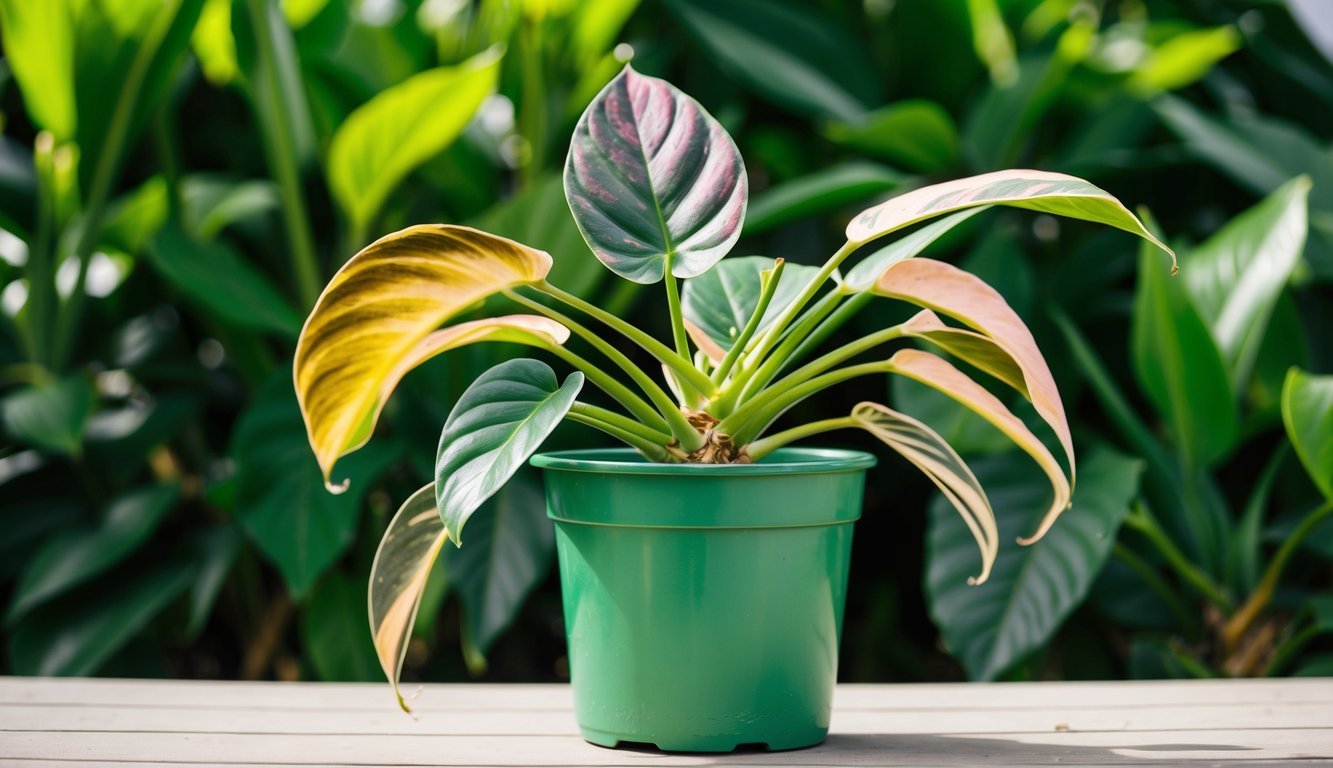
Philodendrons are loved for their lush, striking foliage and the vibrant tropical vibe they add to indoor spaces.
While they are relatively easy to maintain, these plants can rapidly outgrow their pots.
Knowing when to repot your philodendron is essential for its health and growth, and this guide highlights the key signs that it’s time for a bigger container.
With over 600 different varieties, philodendrons offer a cornucopia of shapes and sizes that make them favorites among indoor gardening fans.
Native to the jungles of South and Central America, these perennials flourish in indoor conditions, showcasing beautiful, robust leaves that enhance any room’s decor.
Although these plants are delightful to grow, they generally need more frequent repotting compared to many houseplants.
If left in a cramped pot, philodendrons can become rootbound, which can trigger a series of problems.
Fortunately, several telltale signs can alert you when it’s time to step up their living arrangement.
Signs Your Philodendron Needs More Space
- Roots Pushing Through the Drainage Holes: One of the clearest indicators that your philodendron has outgrown its pot is the sight of roots pushing through the drainage holes.
When roots start to extend beyond their confines, they are actively seeking moisture.
This behavior can lead to blockages, potentially resulting in poor drainage and issues like root rot.
- Roots Breaking Through the Surface: If moisture is lacking near the bottom of the pot, your philodendron might start sending roots upward, breaking through the surface soil.
This upward growth indicates that the roots are feeling constrained and need more room.
If you can visibly see roots at the top, it’s a big red flag that your plant needs more space.
- Changes in Leaf Color: An important sign of distress in a philodendron is when its vibrant green leaves take on dull or brownish hues.
While factors like diseases or environmental changes can cause this discoloration, it often points to the need for more space to thrive.
A stressed plant will inevitably struggle to maintain its lush appearance.
- Roots Coiling Around the Plant: As your philodendron’s roots seek nutrients, they can become tightly packed and may even wrap around the main stem.
This coiling can harm the plant’s structure, leading to detrimental effects if not addressed in time.
- Soil That Dries Out Quickly: While it’s normal for the top layer of soil to dry between watering, soil that dries out excessively and forms cracks soon after watering suggests a breakdown in soil quality.
In these cases, the soil fails to retain vital nutrients, putting your philodendron at risk for malnourishment.
- Noticeable Stunted Growth: It might be hard to pinpoint stunted growth since it can stem from various issues like inadequate light or inconsistent watering.
However, if you notice slow growth, a cramped pot could be the underlying cause.
- Top-Heavy Appearance: Vigorous growth is usually a sign of health, but if your philodendron appears top-heavy, it could indicate a need for a larger pot.
Excessive foliage can create instability, which is problematic for your plant’s overall well-being.
- Poor Soil or Container Condition: Sometimes, you may notice that the original soil isn’t suitable for your philodendron or the container has sustained damage.
Repotting may be necessary to avoid transplant shock, characterized by slowed growth or wilting.
- Spending Too Long in the Same Pot: Philodendrons typically need a new pot every two to three years.
However, it’s essential not to rush this process.
Repotting too soon can shock the plant and lead to various issues.
Essential Tips for Repotting Your Philodendron
Philodendrons are resilient plants that often crave bigger pots as they grow.
Although repotting may cause some stress and lead to transplant shock, it’s crucial to be proactive about providing the necessary space every few years.
Look for key signs such as yellowing leaves, roots escaping from drainage holes, and halted growth.
By keeping a watchful eye, especially during the early years, you can prevent your plant from becoming rootbound and stressed.
The best times to repot your philodendrons are in the spring or early summer, allowing them to adjust and flourish in their new home.
Source: Epicgardening.com

